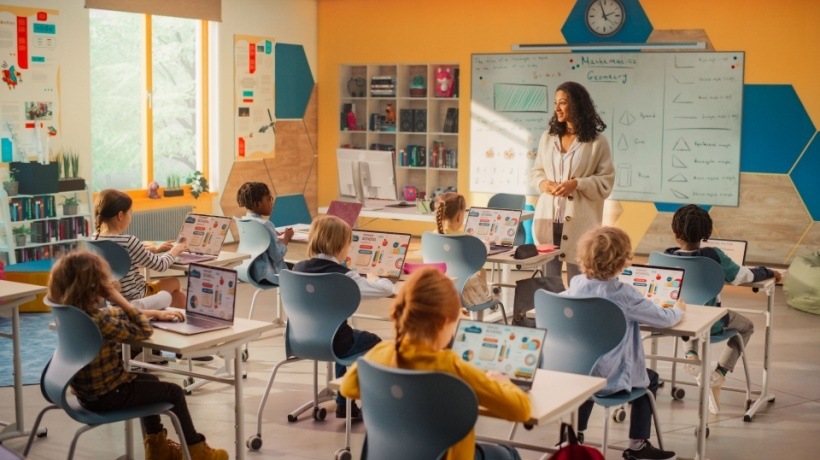Every Teacher Should Be Aware Of These Cost-Free Educational Technology Concepts
Instead of sitting still at their desks, writing dictations, students will soon learn how to fly drones after printing them on 3D printers. Cloud technologies and Learning Management Systems have already given teachers the opportunity to provide lectures halfway across the world, while students get remote access to any kind of course materials. Bigger changes, though. are yet to come.
The Expert View
The forecast for educational technology, held in 2017, showcased several interesting trends that will develop in the near future. Panelists from California State University, Georgia State University, and other field experts shared their insights considering trends that will define innovations in education for 2017. As it turned out, the trends include—but are not limited to—Aritificial Intelligence and robotics, Augmented Reality, gamification, coding, and applying completely new learning models.
"Several technologies continue to converge, new forms of human-computer interaction are gaining visibility and traction” Daniel Christian, (adjunct faculty member, Michigan's Calvin College).
Big and renown universities have always been the greatest fans and early adopters of tech innovations in their classes. Mid-sized colleges and municipal schools though, rarely afforded such enhancements. All's not lost, since small classrooms can invite the innovation to their classes if they start using the cost-free educational technology concepts featured below.
1. Coding
Child coding is certainly the strongest trend that dominates the educational media nowadays. Not all children will become IT specialists in the future, but computational thinking will help them develop abstract and logical thinking, as it will teach students how to divide tasks into smaller parts. Students early grasp on how to use devices, in connection to coding, can boost their interest in technology. The craving for entertainment can be combined with Learning and Development. If the teacher introduces students to the ways they can use resources for learning the basic coding (on platforms like code.org, khanacademy, or codeacademy), many of them will compose algorithms, or even write code themselves in less than a year.
2. Augmented And Virtual Reality
The Google Expeditions program turns every student into a Virtual Reality learner, with the help of cheap cardboard glasses. During such virtual tours, the students, along with teachers, can immerse themselves into the surroundings of the studied subject, varying from the ancient pyramids, or the ocean floor to the outer space. As Oculus Rift technology was recently purchased by Facebook, it can be possible for students to learn just by taking part in games the following years.
Augmented Reality is closer to classrooms than we think. In fact, apps like Animal 4D+, Space4D+, and Elements4D already allow students to interact with virtual animals, molecules, and planets via their laptops and phones.
3. Gamification
Gamification in education is an exciting way to grow the interest in the subject among students. The greatest benefit of gamification is that a student can practically apply the learned material and strengthen the information retention. The experts point out that using games while learning provides multiple perspectives on the problem solving, and also gives the chance to rehearse and polish the skill in the safe environment. Educational platforms, and the majority of applications nowadays, apply the element of gamification. For instance, the teachers can create whole collaborative assignments with interactive questions in apps like EdCite, or set the quiz contest for the class, and manage it in Quizizz.
4. Flipped Classroom
The flipped classroom is a conception of studying, according to which the learning should take place outside the classroom, while the homework is done in the classroom. In order to learn outside the class, the teachers apply online educational tools and apps. An LMS is usually the platform where online learning is happening. The LMS allows to gather the learning materials in one place, make the assignments, grade them, and track students' progress. Some of the most renown LMSs for Κ12 and higher Ed include Canva, Schoology, and Google Classroom. In the LMS, teachers can also integrate those apps that will ease the assignment management. They can, for example, automatically check the assignments for plagiarism in Unicheck, grade, and discuss them in Chulkup.
5. Robotics And Artificial Intelligence
Universities and colleges use robotics along with coding. The students get more excited about coding as they see how the algorithm brings to life their favorite things. So far, the products that suggest trying the robotics in the classes include robokits like Wonder Workshop's Dash and Dot, Ziro and Lego Mindstorms. The Artificial Intelligence is massively integrated into the learning process using natural language processing (NLP) technologies. They become the basis for the functioning of the variety of apps, that demand authorship attribution, like Emma, using personal assistants, helpers, and tutors that synthesize human speech like Cognii.
The Closing Word
As the whole world is experiencing the boom of innovative technologies, the classrooms can’t fall far behind either. The inexpensive and free educational innovations are already within hand reach. Applying them in classroom lets students understand how they can boost their learning abilities and shows them that their knowledge will soon have application in real life.









